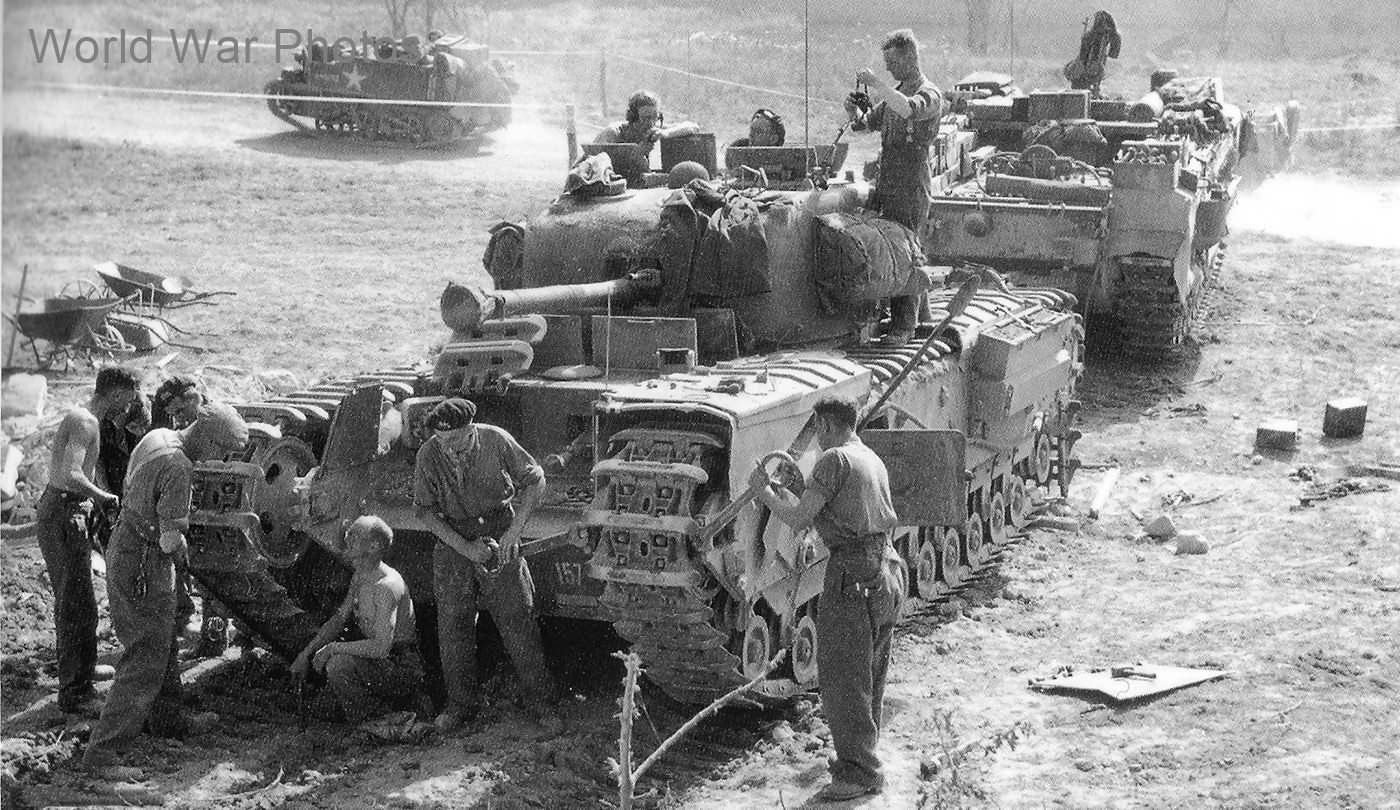The Churchill tank, originally armed with the Ordnance QF 2-pdr (40mm) gun, was rapidly outclassed in North Africa due to the improved armor of German tanks. Introduced in 1936, the 2-pdr was already outdated by the time the Churchill entered service. The solution came in 1942, when the tank was upgraded with the Ordnance QF 6-pdr (57mm) gun for battles in Tunisia and Italy.
The 6-pdr was notable for its armor-piercing (AP) capabilities, especially with the longer-barrel Mk V version, but its effectiveness was hampered by the lack of high-explosive (HE) rounds needed to target low-profile anti-tank guns and machine gun nests. The gun was eventually bored out to 75mm to accommodate American HE ammunition, improving its ability to handle non-armored targets, but at the cost of reduced AP performance.
By the Normandy invasion, many Churchills carried the 75mm gun for its HE capabilities, but a select few retained the 6-pdr to use the newly developed Armor-Piercing Discarding Sabot (APDS) rounds. These APDS rounds, introduced in March 1944, had a much higher velocity and were highly effective against armor, but their limited availability and the lack of practice among crews reduced their battlefield effectiveness.
In Normandy, Churchills typically carried 87 rounds for the 6-pdr or 75mm guns, with a suggested mix of AP, HE, and smoke rounds. Given their infantry support role, they were often loaded with HE rounds, which, while unable to penetrate enemy armor, could still disable enemy tanks by damaging critical external components.
The tank was equipped with a 2-inch bomb thrower in the turret for laying smoke and was also available in Close Support versions armed with a 95mm howitzer capable of firing smoke, HE, and High-Explosive Anti-Tank (HEAT) rounds, though these tanks were less common.
Ammunition Types
6-pdr Ammunition:
- Shot, APCBC, Mk 9T: Solid shot with a ballistic cap for better armor penetration.
- Shot, APCR, Mk 1T: Tungsten core round that was a precursor to APDS.
- Shot, APDS, Mk 1T: High-velocity round with a sabot, offering superior armor penetration.
- Shell, HE, Mk 10T: Limited HE capability compared to 75mm rounds.
75mm Ammunition:
- Shot, APC M61: Standard kinetic AP round with moderate effectiveness due to lower velocity.
- Shell, HE M48: Effective HE round, capable of being fused for instant detonation or delayed action.
- Shell WP M64 Smoke: White phosphorus round for creating smoke screens or igniting flammable materials.
The Churchill’s role as an infantry tank emphasized versatility, requiring a balance between anti-tank and infantry support functions. Its later upgrades allowed it to remain relevant, though it often faced challenges in dealing with heavily armored enemy tanks.
